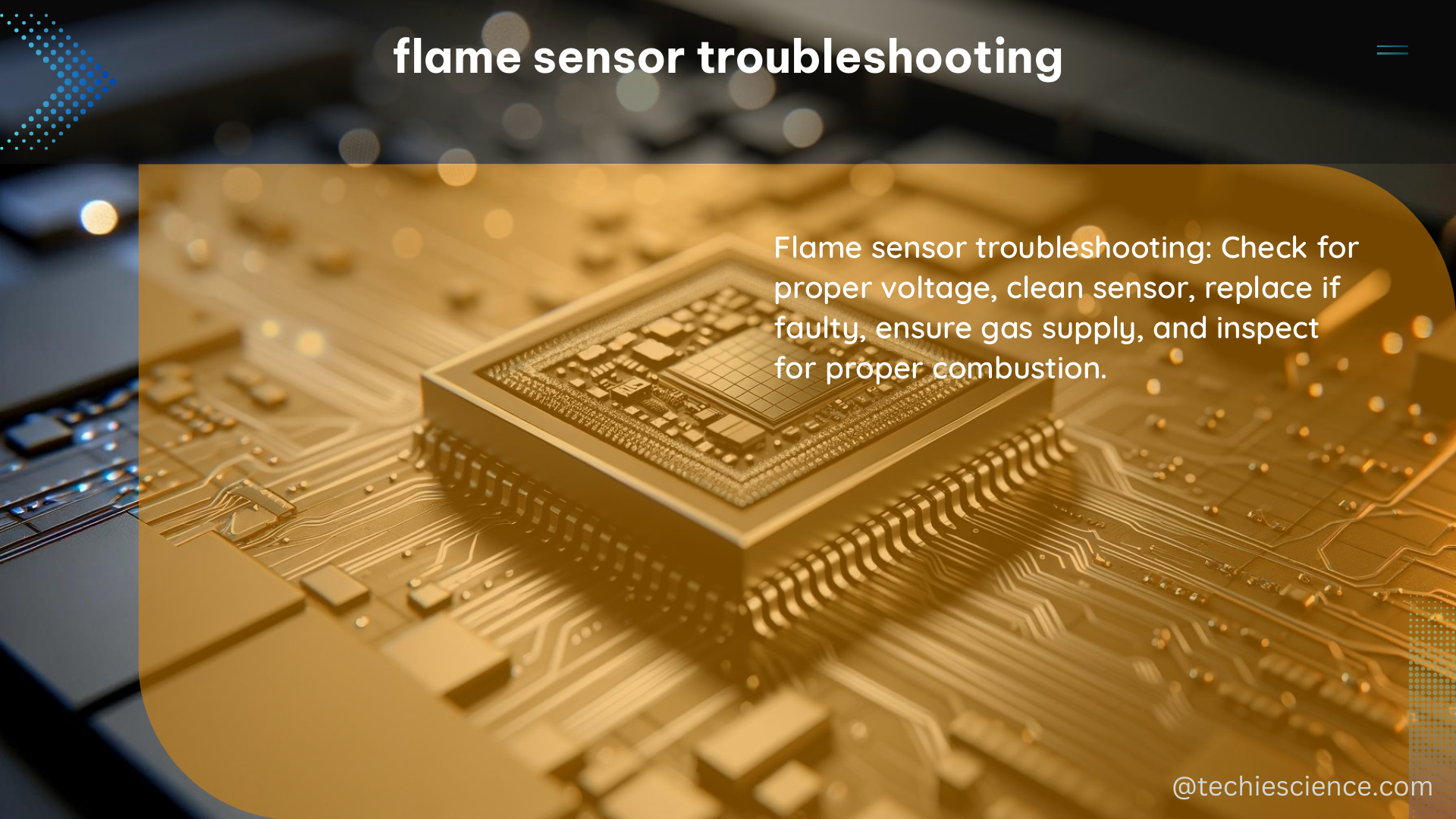Flame sensors are critical components in gas furnaces, responsible for detecting the presence of a flame to ensure safe and efficient operation. Proper troubleshooting of flame sensors is essential to maintain the safety and performance of these systems. In this comprehensive guide, we will delve into the various measurable and quantifiable data points that HVAC professionals should consider when troubleshooting flame sensors.
Current Flow: The Backbone of Flame Sensing
The flame sensor establishes current flow using the flame as a conductor. In a properly functioning system, the voltage at the sensor is alternating current (AC), but it is rectified to direct current (DC), usually less than 10 microamps (μA). This current flow is the backbone of flame sensing, as it allows the furnace control module to monitor the presence of the flame.
To measure the current flow, HVAC technicians can use a multimeter set to the microamp (μA) scale. A clean flame sensor should typically measure between 4 to 6 μA on Carrier brand furnaces, with lower values indicating the need for cleaning or replacement. It’s important to note that the acceptable range may vary depending on the furnace manufacturer, so it’s crucial to refer to the specific manufacturer’s recommendations.
Microamps: The Vital Measurement

Microamps (μA) are the units used to measure the flame sensor’s current flow. This measurement is crucial in determining the overall health and performance of the flame sensor. A clean flame sensor should typically measure between 4 to 6 μA on Carrier brand furnaces, with lower values indicating the need for cleaning or replacement.
It’s important to note that the acceptable range may vary depending on the furnace manufacturer, so it’s crucial to refer to the specific manufacturer’s recommendations. For example, on Lennox furnaces, the acceptable range for flame sensor current is typically between 1.5 to 6 μA, while on Rheem furnaces, the range is typically between 2 to 8 μA.
Voltage Potential: The Electrical Landscape
When troubleshooting electrical issues related to flame sensors, it’s essential to measure the voltage potential. This measurement can help identify potential wiring issues, such as a reversed polarity or a lack of voltage potential, which can prevent the flame sensor from functioning correctly.
For instance, if the black and white wires are switched in the junction box or receptacle, there will be no flame sense due to the lack of voltage potential. In a properly functioning system, the voltage potential should be within the manufacturer’s specified range, typically around 24 volts AC (VAC).
Grounding: The Crucial Connection
Proper grounding is crucial for flame sensors to function correctly. A poor ground can introduce another voltage potential at the furnace chassis, affecting the flame-sense current. To check for proper grounding, HVAC technicians can measure the voltage between the common (black) wire and ground, which should read 120 VAC, and between the neutral (white) wire and ground, which should read 0.0 VAC.
If the voltage readings are not within the expected range, it may indicate a grounding issue that needs to be addressed. Proper grounding ensures that the flame sensor can accurately detect the presence of the flame and provide the necessary feedback to the furnace control module.
Flame Rectification: The Conversion Process
Flame rectification is the process of converting AC voltage to DC voltage. When the flame touches the sensor, the module establishes and monitors this current flow, which should be between 90 to 110 volts for the flame rod to send into the flame.
This conversion process is essential for the flame sensor to provide the necessary feedback to the furnace control module. If the flame rectification is not functioning correctly, the flame sensor may not be able to detect the presence of the flame, leading to safety and operational issues.
Troubleshooting Checklist
To summarize the key points in troubleshooting flame sensors, HVAC professionals should consider the following checklist:
- Measure the current flow using a multimeter set to the microamp (μA) scale. The reading should be between 4 to 6 μA on Carrier brand furnaces, or refer to the manufacturer’s specifications.
- Check the voltage potential between the common (black) wire and ground, which should read 120 VAC, and between the neutral (white) wire and ground, which should read 0.0 VAC.
- Ensure proper grounding by measuring the voltage between the common (black) wire and ground, and between the neutral (white) wire and ground.
- Verify the flame rectification process by checking that the current flow is between 90 to 110 volts.
- Refer to the manufacturer’s specific recommendations for acceptable ranges and troubleshooting procedures, as they may vary across different furnace models and brands.
By following this comprehensive troubleshooting guide, HVAC professionals can accurately diagnose and resolve issues related to flame sensors, ensuring the safe and efficient operation of gas furnaces.
Reference:
- Troubleshooting a Flame Rectification System
- Checking Micro Amps on Flame Sensor
- Flame Sensor Troubleshooting

The lambdageeks.com Core SME Team is a group of experienced subject matter experts from diverse scientific and technical fields including Physics, Chemistry, Technology,Electronics & Electrical Engineering, Automotive, Mechanical Engineering. Our team collaborates to create high-quality, well-researched articles on a wide range of science and technology topics for the lambdageeks.com website.
All Our Senior SME are having more than 7 Years of experience in the respective fields . They are either Working Industry Professionals or assocaited With different Universities. Refer Our Authors Page to get to know About our Core SMEs.